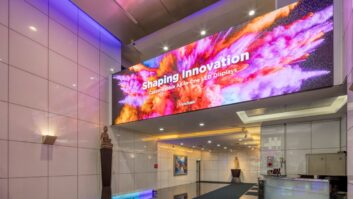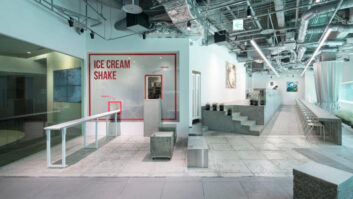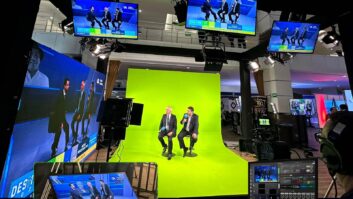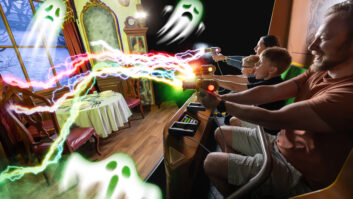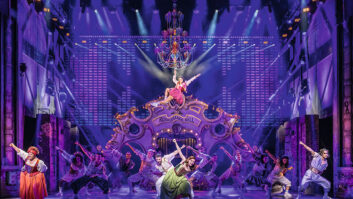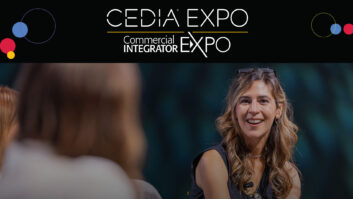The advent and ever-growing popularity of on-demand subscription and non subscription-based streaming services (Netflix, Amazon Prime, iPlayer et al) coupled with the availability of high-speed internet, has significantly altered the way audiences engage with television content in recent years.
According to a report from Ofcom, a staggering eight in every 10 adults in the UK (that’s 40 million people) used some form of catch up TV last year, whilst subscription numbers for the aforementioned paid services topped 14 million.
The rise – predictably – continues to fuel the fire around suggestions that linear TV is either dead or dying, with people increasingly preferring to choose as and when they consume content. You only need to look back to 2017, when an episode of Blue Peter (June 13, 2:30pm) failed to record a single viewer – down from eight million in its prime.
But whilst the figures may give the death knell ringers some solid backing, there still however remains an insatiable appetite for live television, notably sport and – our focus here – during Saturday primetime.
Behind the scenes during last year’s show
All singing, all dancing
The time slot, typically measured between 19:00-22:00, remains highly competitive, with BBC and ITV entering into what’s often described as a ‘ratings war’ between networks through their various different shows throughout the year.
Figures for shows, such as The Voice (5.2m) and The X Factor (5.6m), Britain’s Got Talent (8-9m) have all remained healthy and strong, if not entirely consistent. However, one show that’s currently dancing its way to the top of the rating tables is the BBC’s Strictly Come Dancing.
Now in its 16th series, viewing figures for its live Saturday night broadcast remain solid, pulling in audience figures of between 8 and 10 million – that’s the equivalent of the population of Sweden collectively glued to a TV between 6:30pm. and 8:35pm. This year, the show has been attracting an even bigger audience: on 14th October, Strictly had a peak audience of 11.9 million.
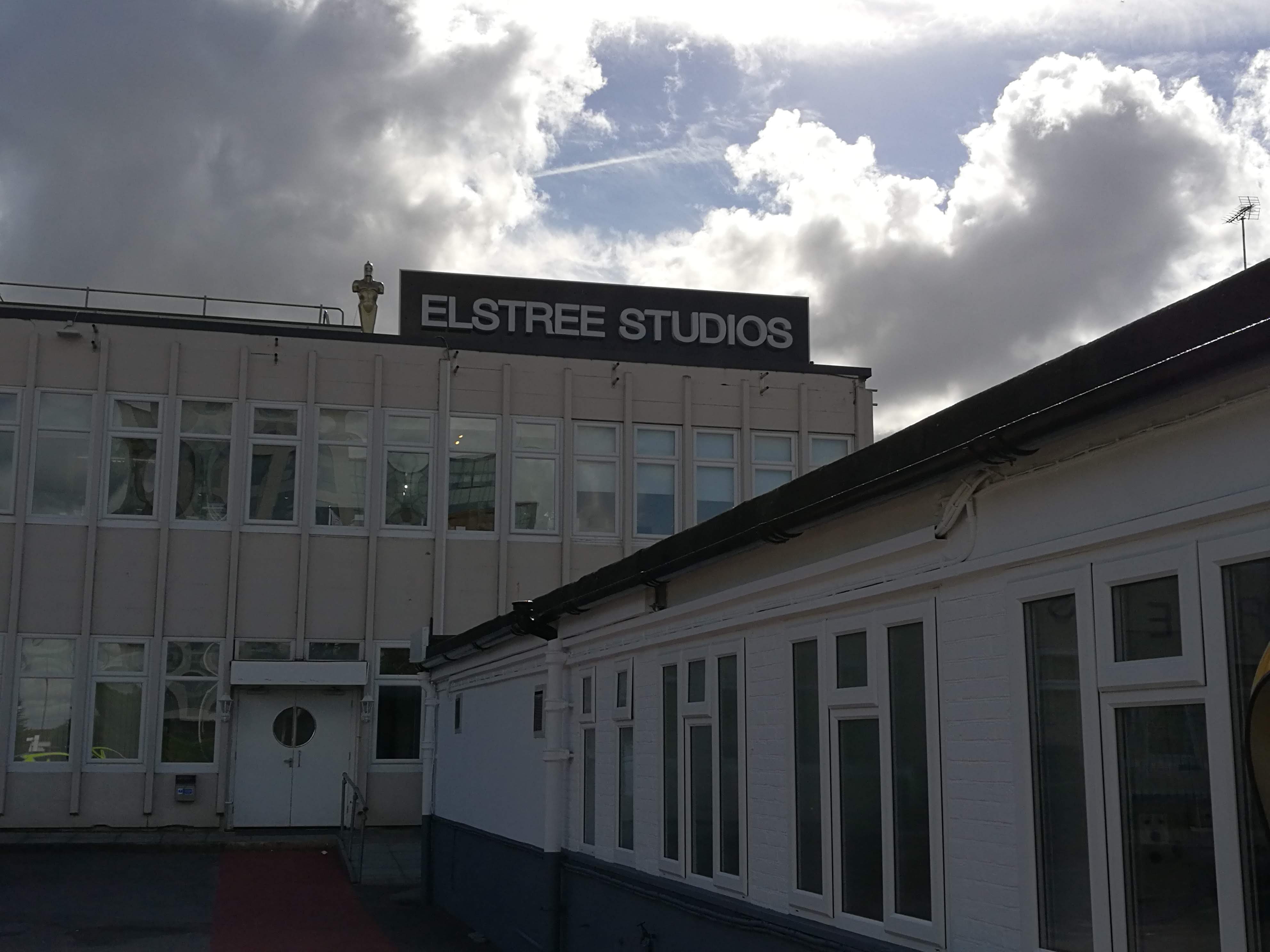
But Strictly’s success hasn’t come out of luck, nor has it sat back and admired its own success. Such is the demand from fans and eagerness for the broadcaster to remain engaged with its audience, Strictly now airs seven days a week. This includes Sunday’s results show, followed by five days (Monday to Friday) of It Takes Two, which follows the progress of the contestants building up to Saturday’s live show.
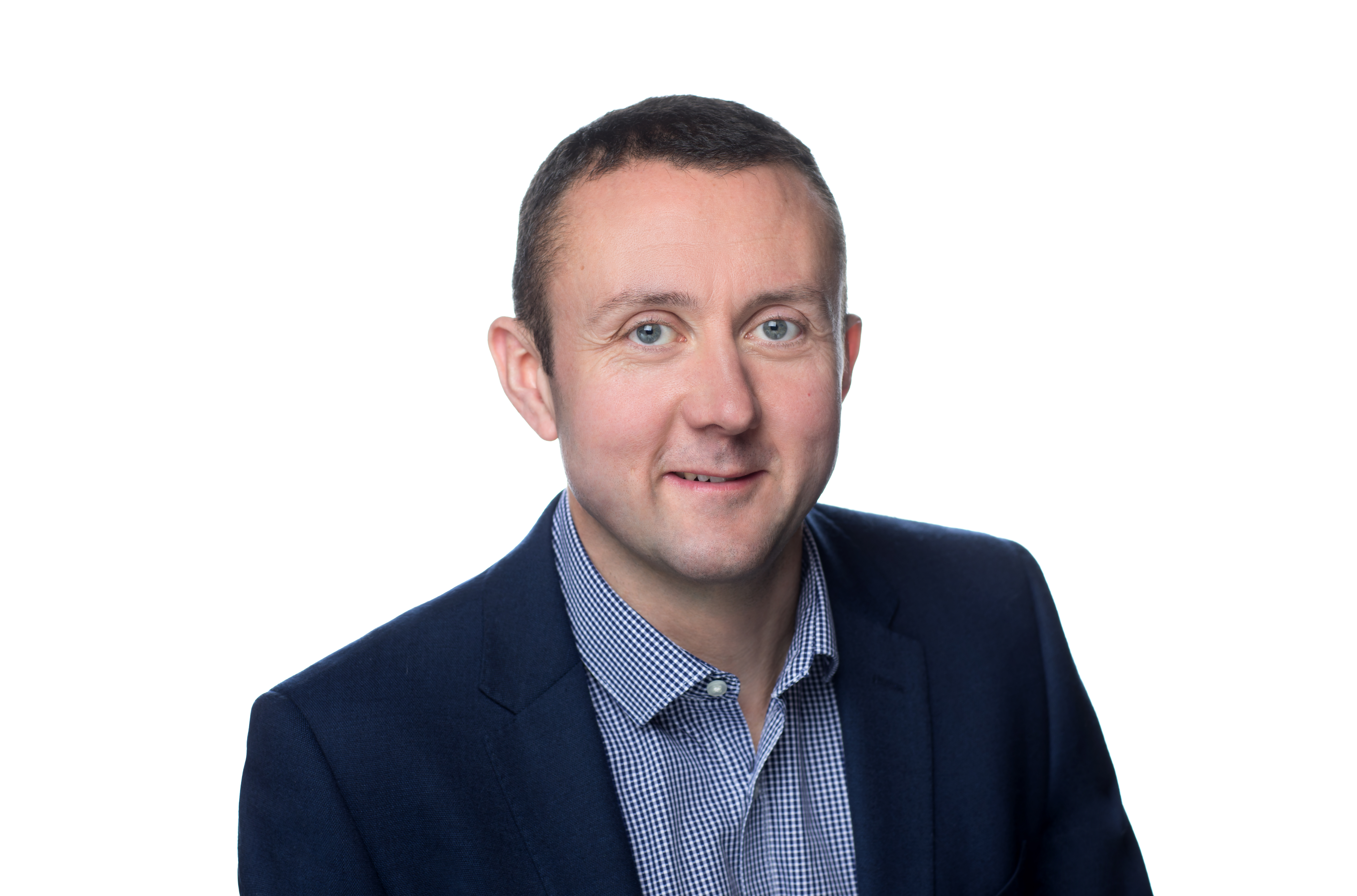
For BBC Studioworks, with studio operations at Television Centre (White City), BBC Elstree Centre and Elstree Studios, facilitating the production and post-production for the show is a full-time job. And by full time, we mean 24/7.
“There’s never a quiet day here,” jokes the MD of BBC Studioworks, David Conway during our visit to its Elstree post-production village, the entrance to which is the exterior setting of Holby City. “Whilst Strictly is a live show, there is a lot taking place during the rest of the week, with daily recordings of things like rehearsals as well as a lot of time-critical editing.”
Run VT
He’s not kidding. The workload that goes into producing the show is not for the faint hearted, be it the staff or indeed the dancers – who by comparison, get off lightly.
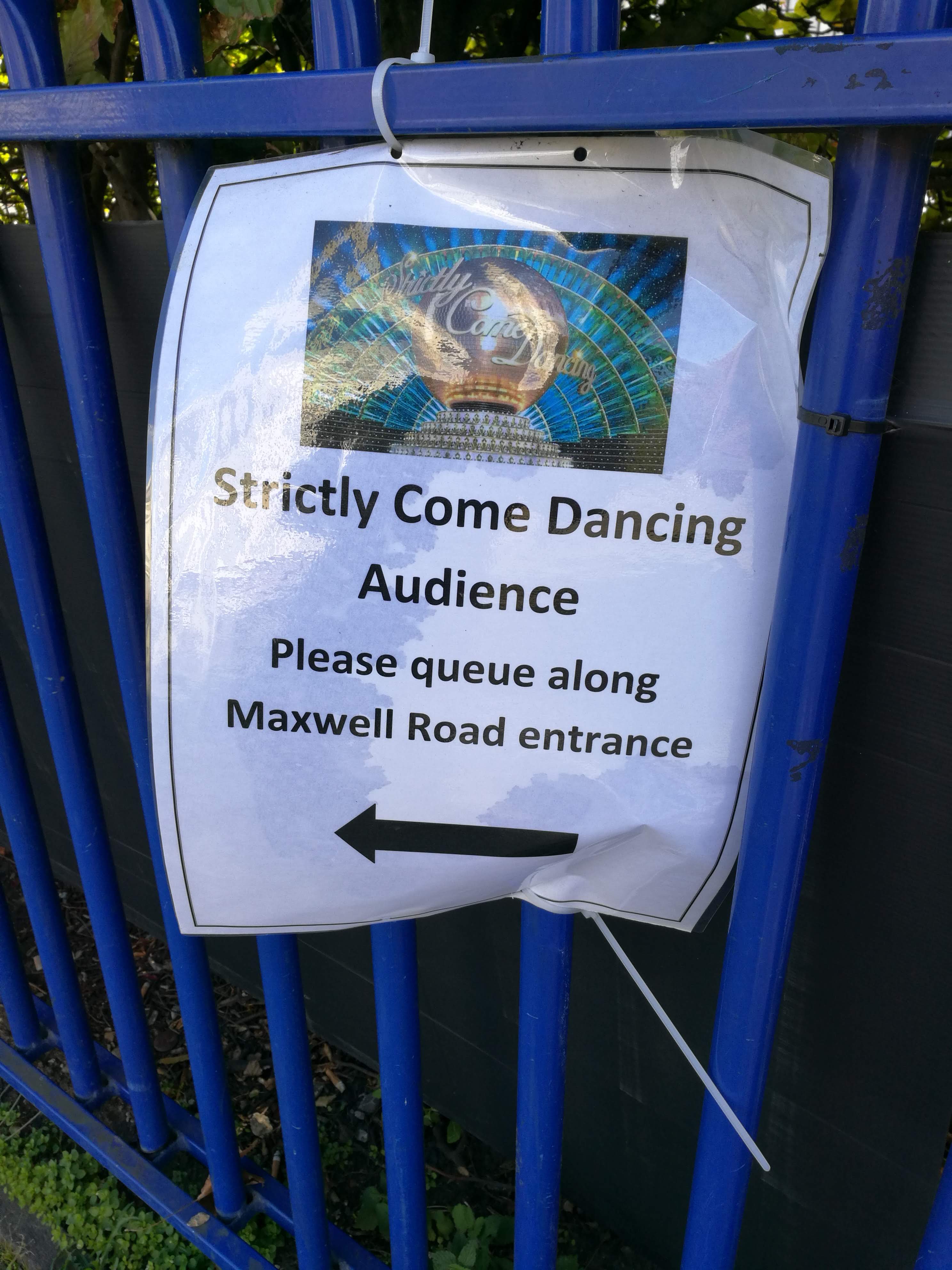
For the dancers, it’s a six day week, only resting on Sunday – should they choose. Monday to Thursday, the couples practice and rehearse in a convenient dance studio location (often close to their home), whilst on Friday they’re required to be in London for a full rehearsal.
During each of their practice sessions, the couples will be assigned a camera crew to capture their progress and collect other types of footage that may occur (accidents, progress – or lack if it).
Each day, crews record two hours of footage on each couple, which will be used to create a VT lasting around 90 seconds for the show(s).
In total, more than 100 hours of footage is collected during the week. As part of a “well-oiled machine,” content is first delivered to the BBC Studioworks data wrangler, who then catalogues, checks and backs up all of the material to a 210TB Object Matrix Online storage solution. From there, a team of loggers ingest the material at XDCam 50 onto a Cinegy logging system connected to 100TB of EMC and SATA Beast storage where the media remains for the duration of the series.
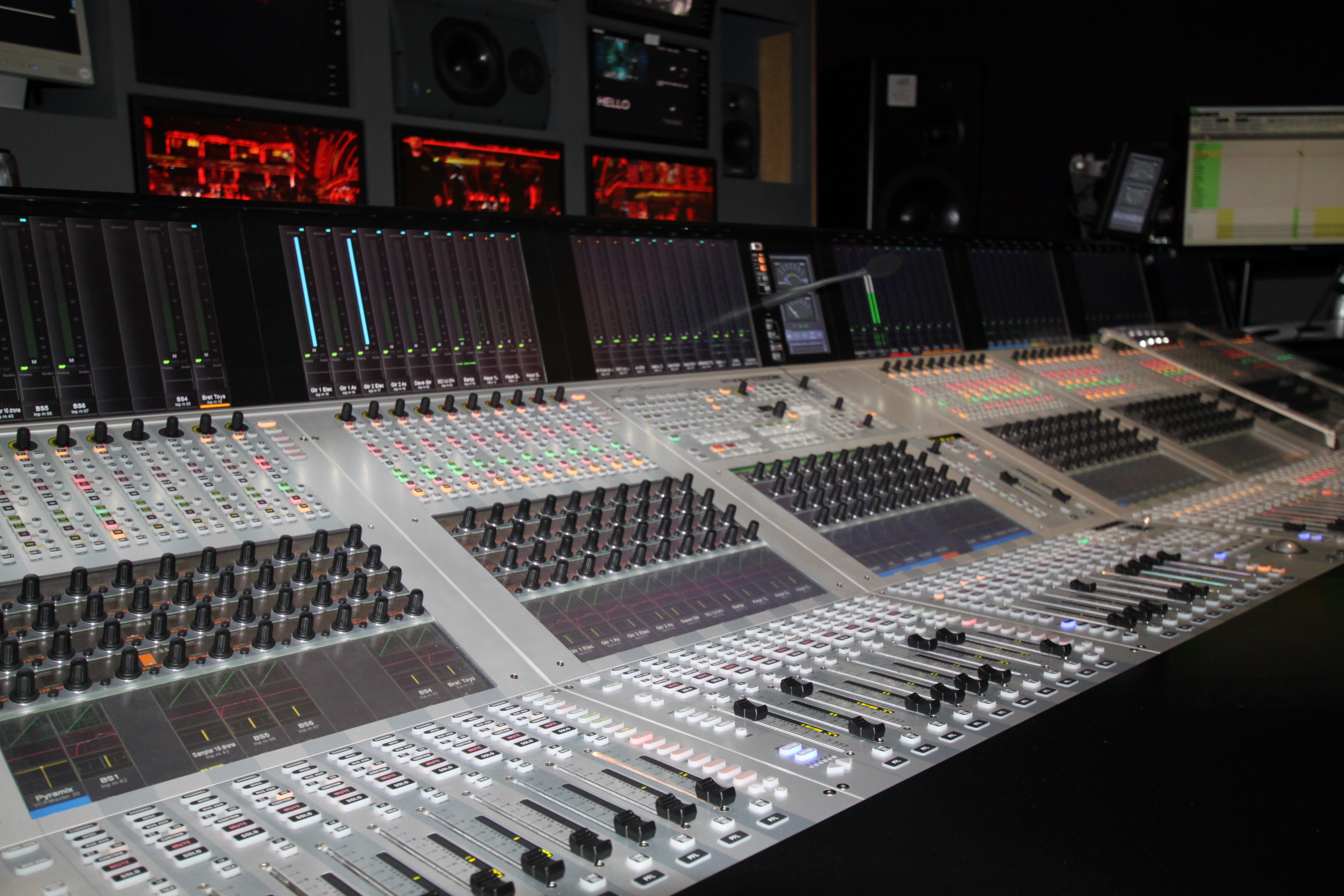
Specific content is sent to a 180TB Avid Nexis server. Editing happens across 12 Avid Symphony edit suites, with audio dubbing being carried out on a Pro Tools system.
“You get handheld cam footage all week of the celebrities in the different rehearsal rooms, so there’s quite a lot to piece together,” adds Conway. “It’s quite a big logging operation.”
John Loughman is post-production supervisor at BBC Studioworks and has worked on the show for the past 11 years. He is responsible for ensuring that all VTs used in its broadcasts are edited to the highest standard and are photosensitive epilepsy compliant before going out on air.
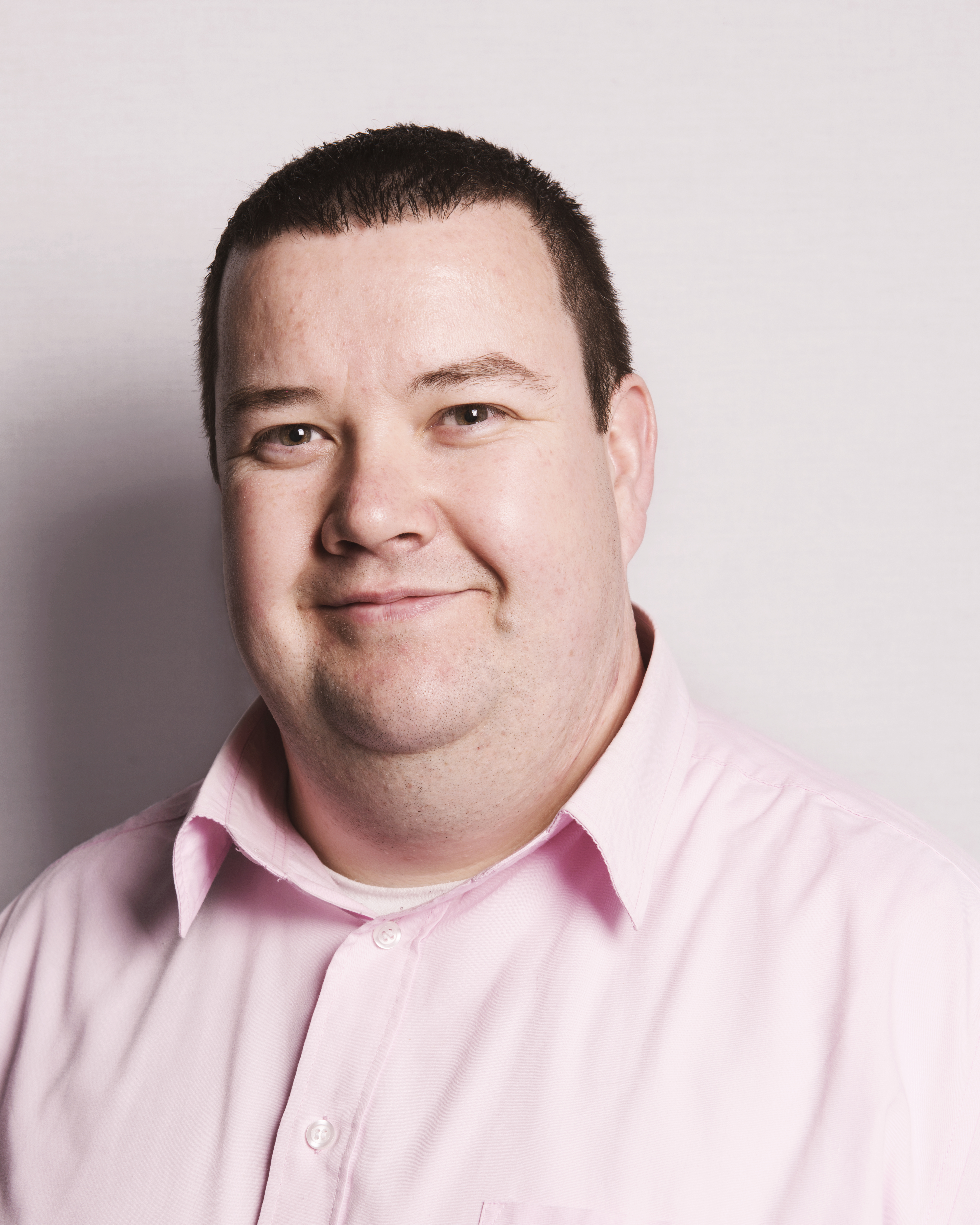
“The workflow hasn’t changed that much over the years and it’s evolved into a very smooth operation,” says Loughman tapping his desk, from which he is working across four different monitors. “My responsibility is to view all the VTs after they’ve been put together by the editors and make sure they’re good and technically compliant. The editors get so close to the content cutting that they can sometimes miss some obvious things, like someone coughing during a shot or something like that.”
Discussing the captured footage, he adds: “Every year they do the VTs differently. They used to shoot hours and hours of training, whereas now they’re a little more strategic. They might go and visit somewhere, such as a family member or a special place, so the training aspect for the main show is now a smaller part. It Takes Two is on five days a week, so they tend to concentrate on the training and have various segments like Choreography Corner, which looks back at the previous weekend. Editorially they have a lot of time to fill and they want to fill it with engaging content.”
Day and night
Editing (unlike the dancing), Loughman explains, does not take a day off – with the frequency of the show ensuring there is always new content to cut. Staff even have to work overnight following the live show’s conclusion on Saturday, with preparation for the results show starting before the credits have even rolled.
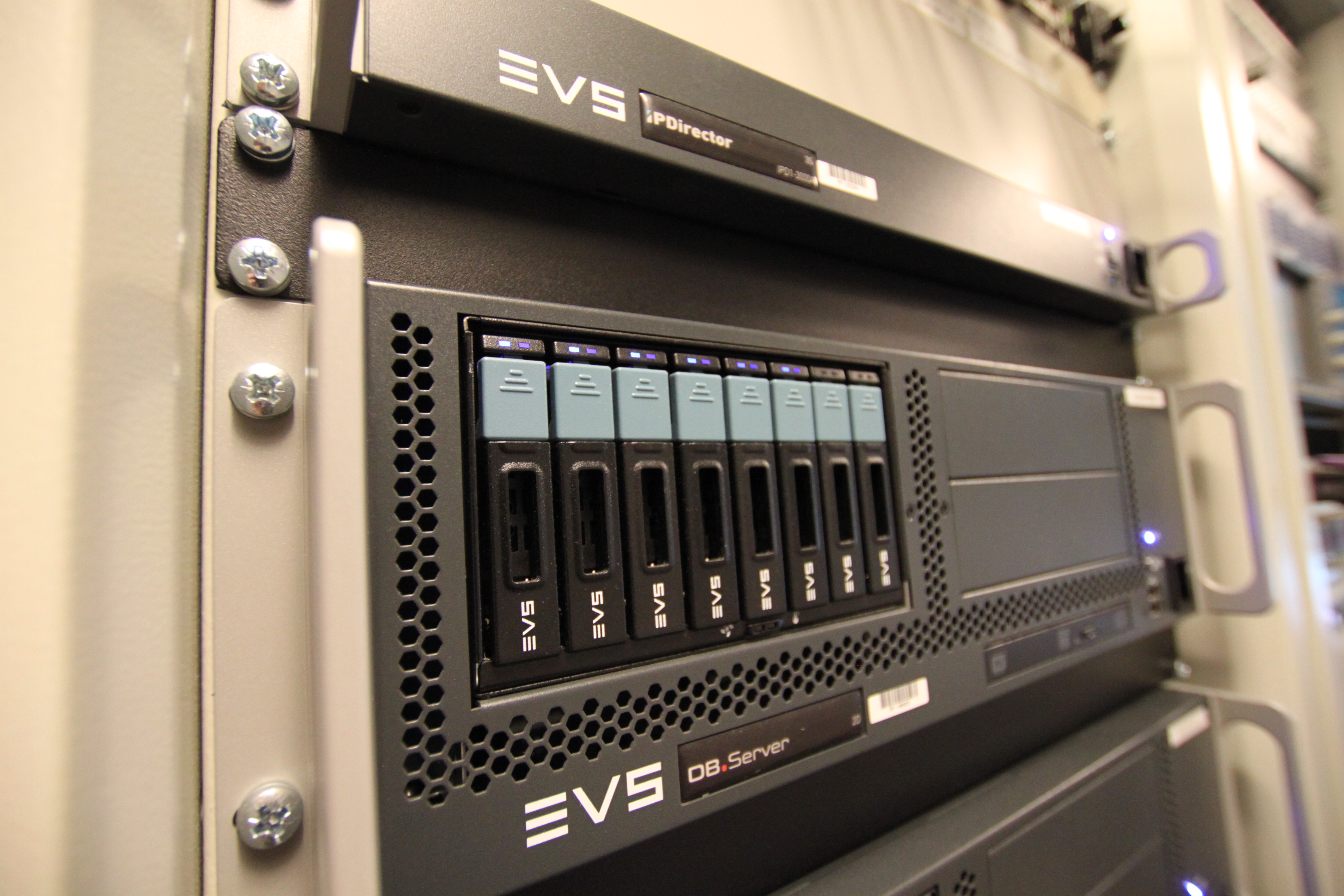
“Saturday night there’s editing, Sunday there’s editing – basically there’s editing every day, seven days a week, 24 hours a day up until the final,” he explains, still smiling.
“On Saturday night, the production team cuts a ‘Behind the scenes’ VT for the Sunday show. They shoot a lot of footage, so much of the work is finding the best bits of the show and all the buzz behind the scenes. It [the VT] is usually in two parts. The first is cutting all the preparation, makeup and getting ready for the show. Then transitioning into the actual show, the reactions from the judges and the door burst as each couple leaves the dance floor. Sunday morning, they then start editing the results show at 6:30am and then deliver that down the line at around 3pm Sunday afternoon for broadcast on TV later that evening. Repeat that process 12 times in a row. It’s constant, but we enjoy it.”
Tape is dead
One of the big changes to the way this year’s show is recorded, delivered and edited is through the use of tapeless capture technology.
The new tapeless system, which has been used at BBC Studioworks’ Television Centre base for the past year, is making its debut in Elstree for Strictly and will be used for all future programming recorded there.
According to Loughman, its new tapeless set-up is something that has become increasingly requested by clients due to it providing a number of time and cost saving benefits (not to mention environmental) when compared to tape.
Stand out benefits include the ability to make material from the studio floor instantly available for editing, even if the show is still being recorded, saving time and ensuring a more speedy turnaround for completion.
The technology is powered by three 12 channel EVS XS3 Servers, which are based in proximity of the relevant studio, along with a 10 GbE switch and an IP Director for each studio. The core system, based in an UPS and generator-backed apparatus room, consists of three Ultra High Performance XT Access Servers, a mirrored database solution and a management IP Director. All media streams onto BBC Studioworks’ 180 TB Avid Nexis storage, either to be edited or held as a backup.
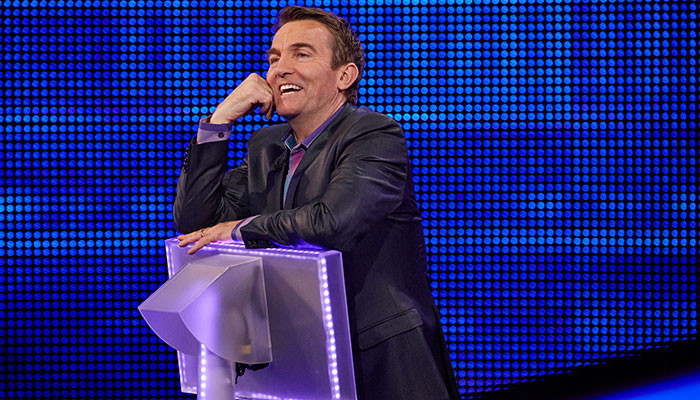
“I pushed for it and was involved in designing and implementing it,” says Loughman. “Basically tape is dead. When we re-opened Television Centre last year, we made a conscious decision to be fully tapeless there and looked at a few different options. It’s kind of becoming the industry standard.
“After doing The Voice last year here [at Elstree], we thought, we’re spending more and more money hiring kit, because a lot of the shows we do, such as The Chase are all tapeless and demand is growing, so I suggested we should look at buying a system and we have.”
And on the benefits?
“If people edit with us, the benefits are massive,” continues Loughman. “They can literally record in the studio, stop recording and start editing straight away. It’s a really efficient studio and post-production tie-up. There’s also cost savings because I don’t have to employ an edit assistant to digitise in real time from tape, but also there are time and environmental benefits, because they’re not being used and then being binned, or keeping them in a room and then binning them.”
He adds: “Within five minutes of a recording being finished, we can hand it over to production. For a lot of other solutions it takes time and you have to wait. There might be a copying time or it doesn’t stream in real time, so it might be 15-20 minutes or even an hour after the recording is finished. A lot of the stuff we do, like The Jonathan Ross Show, Mock The Week, The Graham Norton Show and Have I Got News For You, they’re all edited on the night. So waiting an hour after the recording isn’t really an option.”
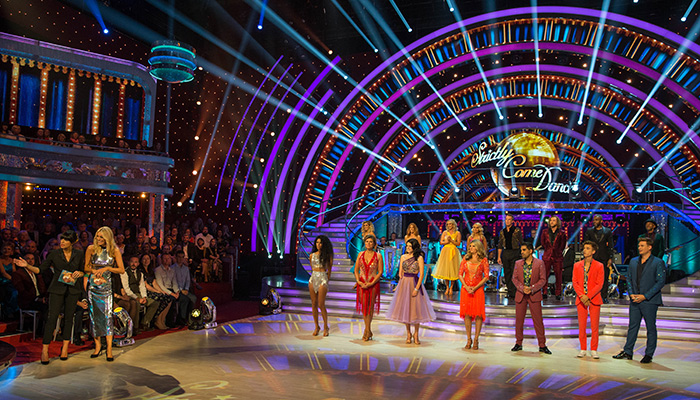
The stage is set
That’s the editing side, but what about the live elements of the show? Ahead of leaving Holby City (BBC Elstree Centre and home of Studioworks’ Elstree edit village) for the short walk to Elstree Studios, Conway gives us a brief tour of Studio D, which was used back in the day for the likes of Jim Henson’s The Muppet Show, Top of the Pops and ‘Allo ‘Allo!
Studio D is preparing to film a new episode of Through the Keyhole and has been the home of things like Children in Need, Celebrity Juice and A League of Their Own in recent years. Measuring 11,800 square feet, with a shiny resin floor and grid infrastructure on the ceiling used to suspend equipment to service the show such as lamps, scenery, screens, speakers, microphones – whatever the requirements happen to be.
Seating for the audience is technically off and away from the studio floor, positioned in a recess at the back of the studio and allowing more floor space for the set.
Studios such as these, Conway explains, are designed to be turned around relatively quickly, with some of our studios across Elstree and at Television Centre hosting multiple shows in a given week or even on a daily basis.
“Down in Television Centre we have six different shows taking place in Studio TC1 this week. So once one finishes, one set comes out and another goes in.” However… “I wanted to show you this because what you’re about to see over the road couldn’t be more different,” he adds cryptically.
As we enter Elstree Studios’ grounds, passing the Big Brother house, a live recording of The Chase, set building for Celebrity Juice, and pausing to admire the set of Netflix drama The Crown along the way, we arrive at the George Lucas Stage 2 – home of the “world famous” Strictly Ballroom.
The Elstree Studios site is one that carries a lot of history in the film world, with over 800 features being produced at the facility over the years. The Star Wars and Indiana Jones trilogies, Superman, Moby Dick, The Dam Busters, The Shining and (my personal favourite) Labyrinth, to name just a few.
Bigger, better, louder
Measuring close to 16,000 square feet, it is the largest gallery-served studio or stage space in the country and has become the venue of choice for many of big saturday night shows, including The Voice, Britain’s Got Talent and of course, since 2013, Strictly Come Dancing.
“We used to host Strictly at Television Centre in Studio 1, which was the largest studio at the time,” says Conway as we maneuver the tight security, and sidestep numerous people carrying colourful (and skimpy) outfits and technicians as rehearsal for the results show is about to begin.
Unlike with the smaller TV studios, George Lucas Stage 2 is, as described by Conway, a “giant empty soundproof box” – with the set, which houses 640 audience seats, taking over a fortnight to build and remains in place for the duration of the series.
“It doesn’t have an infrastructure like a traditional TV studio, so you’re building everything from scratch,” comments Mark Osborne, construction manager for BBC Studioworks, who has been working on Strictly for 14 years and with the BBC since 1983.
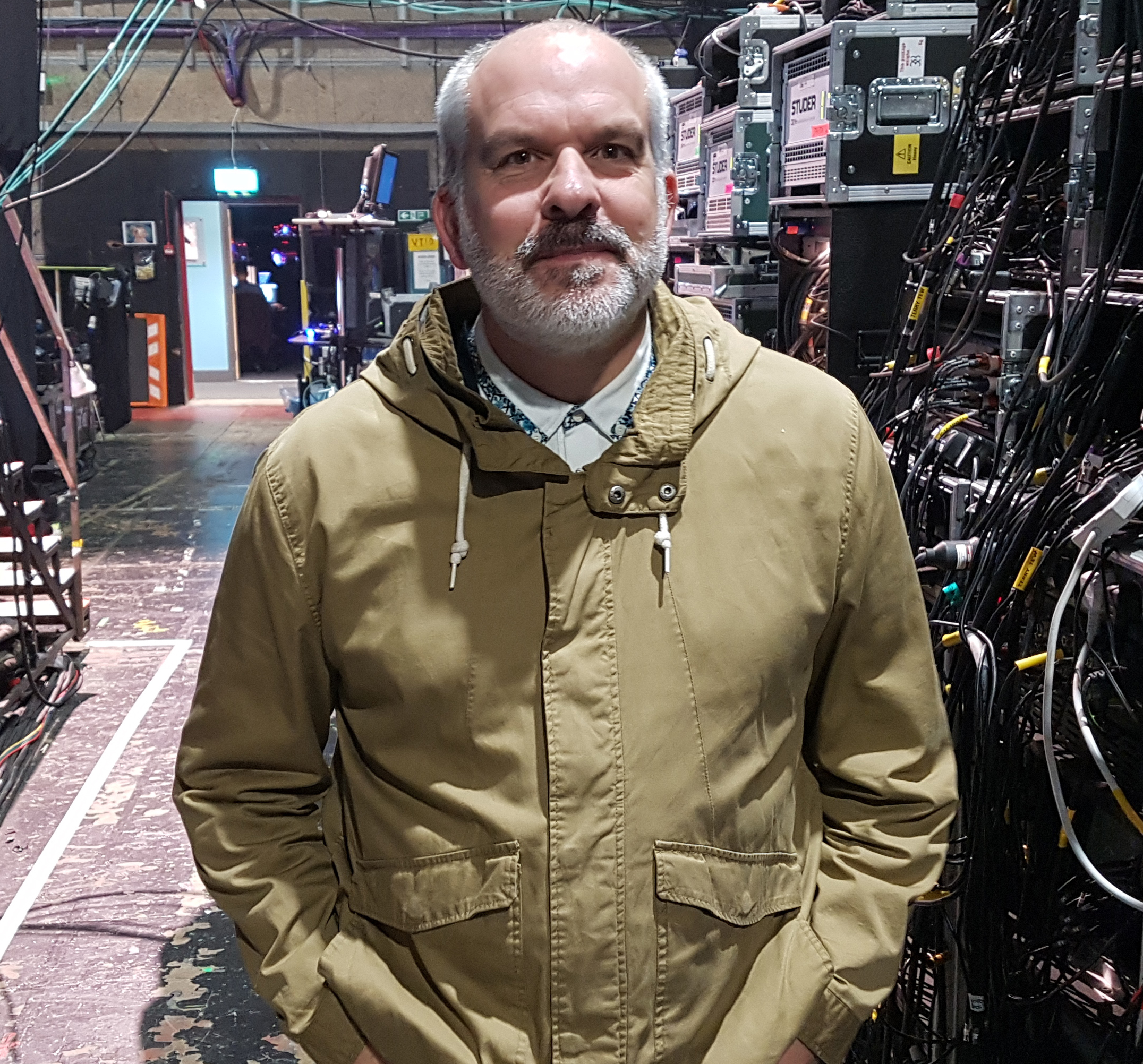
Osborne is responsible for turning the “empty box” like venue into the spectacular ballroom setting it is in front of us. “It’s the biggest and best thing I’ve ever done,” he explains as we stand behind the judges’ desk, the stage to our right and the giant disco ball in our sightline.
“In July I go to set storage and get it all refurbished. On August the 8th, I start in here with an empty shell. From that day on, the roof goes in, the lighting goes in, and then we mark out for where the set goes in, which needs to be accurate to within 35mm, or else it wont work. A week later, we start with the set build. That takes two and half weeks to get everything in and then after that, the dance floor is laid, which takes a day to put down.
“It’s like Ikea, you just then put it all together. Everything about it is just huge, far bigger than what it was at Television Centre.”
Experience for the audience and making them feel truly immersed in a theatre, rather than a television studio is key.
“When it was first designed, the objective was for it to be theatreesque and like the ballroom at Blackpool Tower,” says Osborne. “Each year it grows, much of which many won’t notice, but it’s about maintaining the illusion. I love it.”
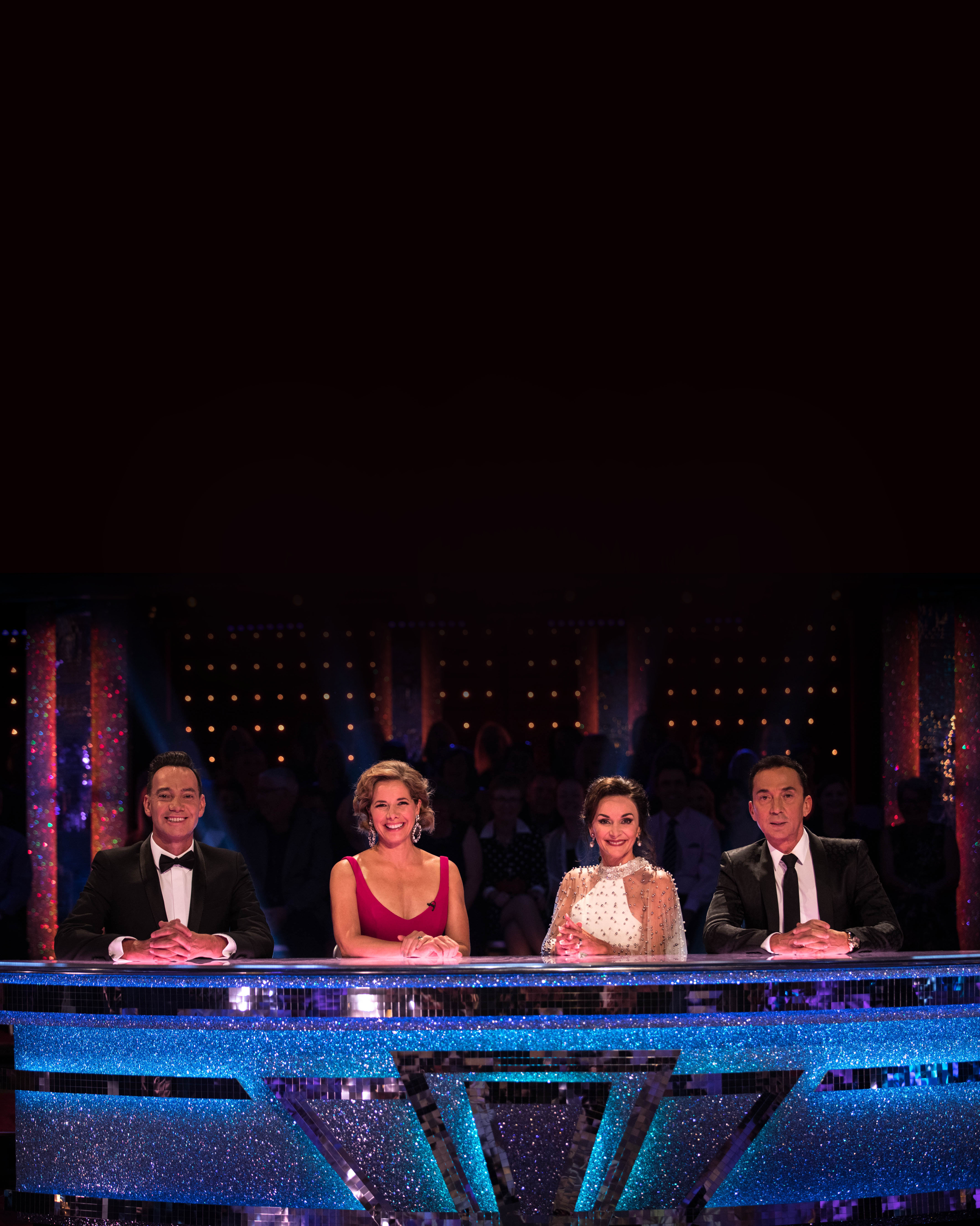
Choreography
With the show broadcast live, there is no room for error, not just those on camera, but crucially those behind it.
Visually, the audio and visual aspect of the show needs to be as choreographed and scripted as the dancers.
In total, there are 16 camera operators (all manned) during a live show – all of which have a script, determining what they are required to do and where they are required to be at all times. For example, the director will monitor each couples’ rehearsal during the week to determine what shots will work best. The same needs apply for all teams to ensure everything runs smoothly and all potential permutations are considered.
Lighting and visuals play a crucial role in creating a visually impressive and immersive environment and experience for those inside the studio and watching
at home.
There are hundreds of lights and six projectors (all Christie and supplied by Creative Technology), dotted around the venue, which like the camera crews are choreographed based on the music and the dancers.
Considerations such as ensuring lights or projection images do not point directly at a camera during specific shots to avoid lens glare, or even in the eyes of the dancers are a key part of the planning. The choice of colours from the projections and lights must also be considered so not to create a colour clash with costumes.
Colour temperatures from each camera are also monitored closely to ensure the exposure is consistent throughout, ensuring what is seen on TV does not vary between shots.
“Everything is choreographed and scripted from start to finish” explains sound supervisor, Andy Tapley, “Everything is broken down into bars and they [the camera crew] will have a shot card telling them exactly when their camera will be operational, where their camera should be, how wide, how tight and who they’re looking at. Everything has been thought about in advance. All the music has been listened to and worked out on the camera scripts.”
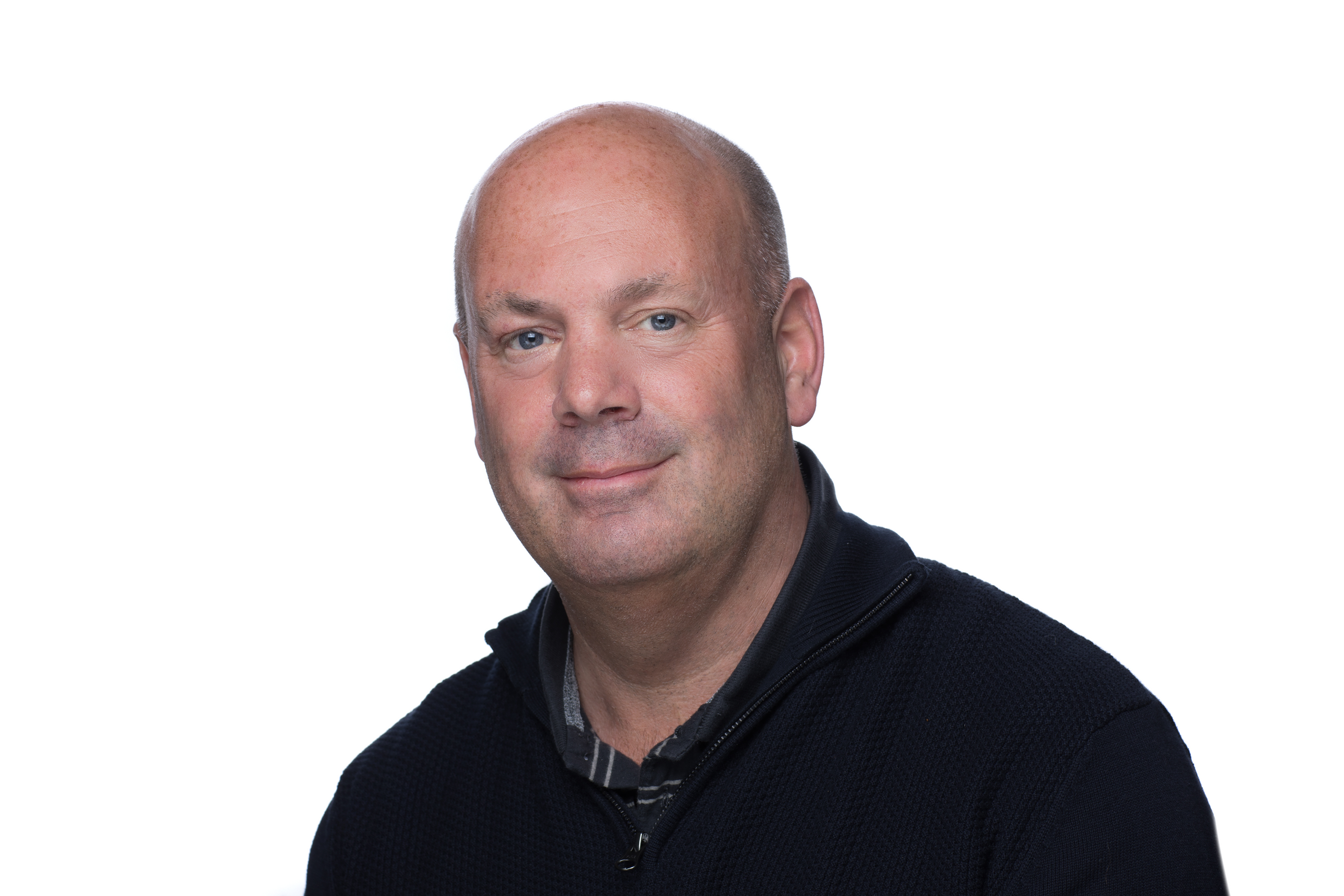
Sound of music
The glue (arguably) holding all of the above together, plus ensuring the experience for the audience is as immersive as it is entertaining, is through audio.
With a plethora of major live large-scale projects for BBC Studioworks under their belt, Tapley, co-supervisor Richard Sillitto and their team are responsible for bringing the show to life.
Using a Riedel comms system and a Studer Vista X mixing console (its broadcast desk) as the backbone to the audio set-up, Strictly now has the largest audio configuration of any production supported by Studioworks. There are of course many different areas in which audio is paramount.
During a live performance, the audio team manage around 80 RF channels, including presenters, dancers (often built into their outfits), judges, guests and performance artists. All radio microphone equipment is hired through Terry Tew Audio, an AV firm, based in Chigwell, with the preferred choice used in the show being Sennheiser and Shure.
In total, there are just under 200 sources in the studio feeding into six stage boxes which feeds directly (via fibre) into the sound desk, which is manned by two people.
“It’s such a busy show, physically it would be very difficult for one person to mix it,” says Tapley. “With 15 original couples, judges, presenters all on radio mics, 80 band circuits, audience mics and spares on standby, we have a team of sound assistants ready for every eventuality. Sometimes there are some unforeseen circumstances and you work together to overcome them. That’s part of the fun of the job.
He adds: “The frequency management is obviously very important and we have to work closely with other shows in the area to make sure we don’t have any crossovers.”
Going live
Another major aspect of the show, one in which Tapley lauds as one of Strictly’s greatest assets, is the use of a live band. In total, 18 musicians are used during each and every show, only learning what music they will be playing when they gather for the first time ahead of the show.
In total, there are 80 circuits coming into from the band. This includes a drummer, a percussionist, bass player, two guitars, three keyboard players, three saxophones, three trumpets, two trombones and four singers.
“Everything has to be hidden away because we don’t want the viewers to see speakers or microphones at all,” says Tapley. “Generally the audience shouldn’t be aware of it either and it’s our job to make sure that’s all managed properly.”
The couples rehearse their dances to track playback during Friday rehearsals, but in the evening the band rehearse the songs for the first time. This gives the audio team the chance to start setting up individual mixes for each song in preparation for the live show.
“It’s one of those things people watching at home may not realise or truly appreciate, but it’s a huge part of the show and the experience,” he explains as we take a tour of the dance floor, currently empty but with a brightly lit stage.
“It’s completely live, so if something goes wrong, or they play a wrong note, or sing something wrong that’s what goes out. The couples all dance to playback during the week, which allows the preparation for all the positioning, lighting etc to be decided and confirmed.
“These musicians are some of the best in the world. They’ll turn up on Friday night, not knowing what they have to play and they’ll do it perfectly. It’s so much better having a band play rather than as a playback. It has much more energy and makes the show very special. It’s a huge part of what makes Strictly such a great show.”
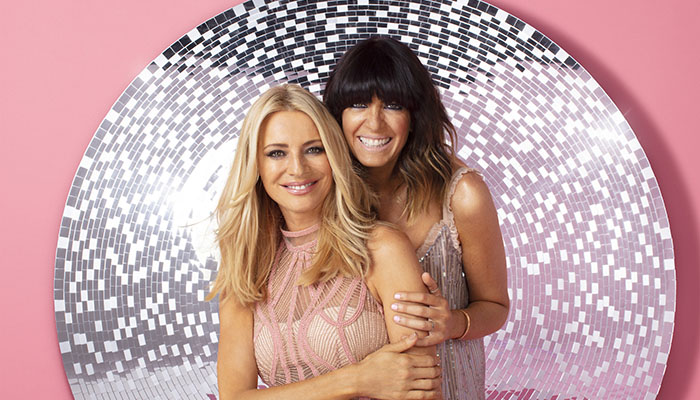
Swansong
As our time at Elstree draws to a close, we are quickly hurried off the dance floor as presenters Tess Daly and the rather colourful Claudia Winkleman arrive.
With the results show rehearsal taking place, we get to see, albeit briefly, Tapley and his team in action. Working to a 120-plus page script and under the constant direction of the script supervisor (whose voice can be heard at all times often, counting down), the rehearsal kicks off.
Using ‘Spoton’ playback software (recorded sound bites), Howard Hopkins standing in front of a monitor clicks the first of many (possibly hundreds) of different coloured squares in front of him. The music starts. Watching the feed from the studio, viewing his script and the command of the director, he hits another.
“This is Strictly Come Dancing: The Results! Please welcome your hosts, Tess Daly and Claudia Winkleman.’
Tapley and his team spring into life, managing the microphones from the presenters as they introduce the show, reading from teleprompters positioned on several cameras. “These are all Howard’s cues he needs to play in,” Tapley explains during a brief pause. “So this next section for example, we’ll cut to Claudia and then we’ll cut to a graphic and then we’ll move into VTs and we’ll play the VT sound. We can then relax for a minute. A VT is often where if there is a problem somewhere, such as a dodgy microphone, we can get in there, fix or replace it.
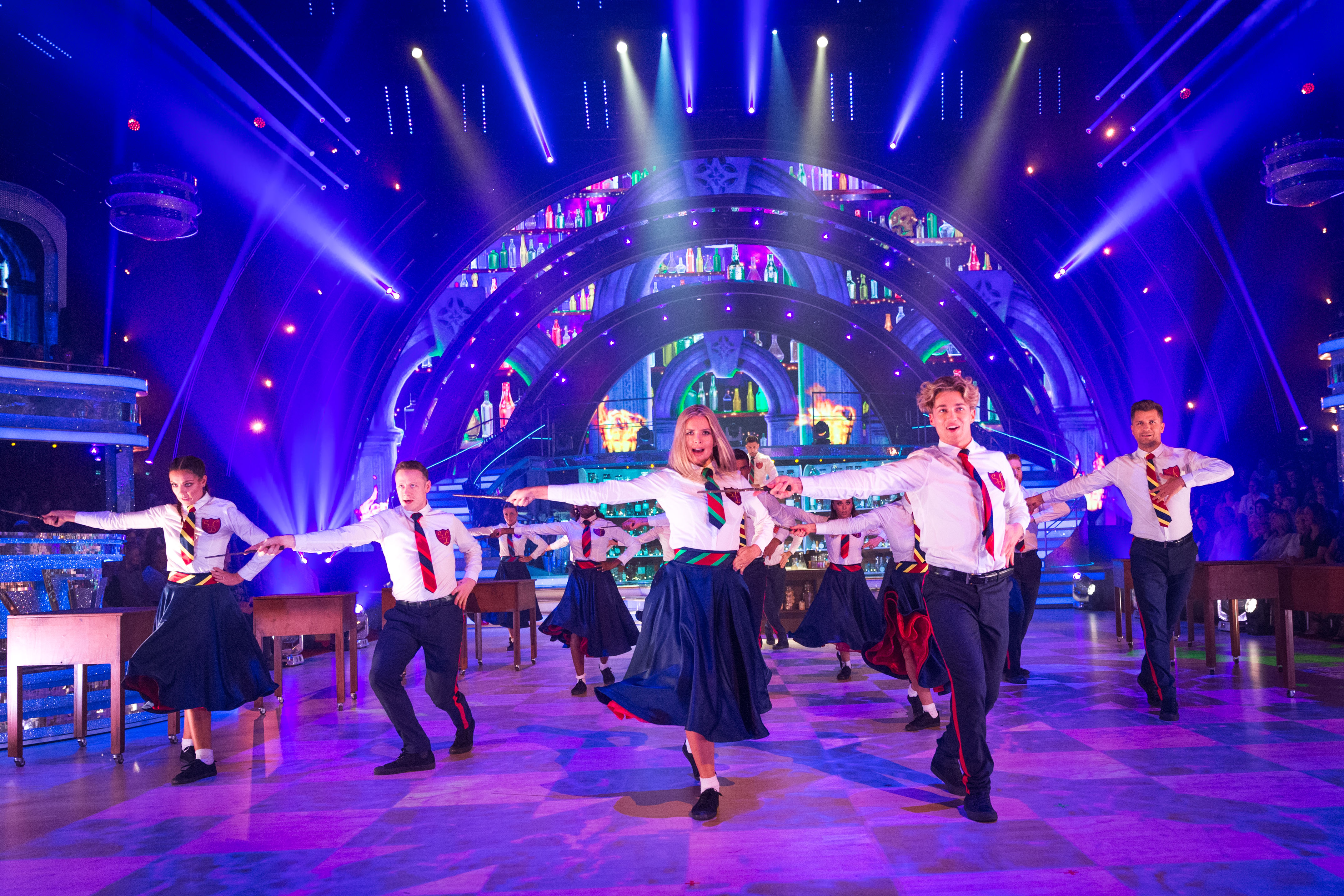
“Everything is about managing that sound. We have to make sure the audience reaction is working properly with the mix. When we come to a couple’s song, I have that loaded in already, so the band is set up, but I’m still managing their levels and making sure the whole mix is working together.
“If you make one small mistake, even just for a few seconds, everyone will know and the impact is huge.”
The audio and lighting teams are the first to find out the results of the public vote in advance of the audience and dancers – often just a few minutes before the cameras start rolling again. During this short period, they will immediately prepare the running order as Tess Daly details who stays and who goes, highlighting (spotlights) and capturing the reactions (both visually and audibly) of the dancers and the audiences.
“We’re on air at 6:30 and I’ll probably walk out at 11:00pm, so it’s probably a 15 hour day for us,” says Tapley as Winkleman and Daly conduct the stop-start rehearsed elimination in the background. “We have a wrap time of around 10:00pm. It’s a full on day,”
Wrapping up our time in Elstree, Tapley concludes: “The great thing about doing a live show is the adrenaline rush. You know that at 6:30pm we’re on air. So, your whole day is building up to that point and you don’t have the option of saying, we’re not quite ready, can we go on at 7:00 pm instead. You have to be ready. That’s why I love this job.” ν

